June 8 - 14, 2014: Issue 166
Lynleigh Greig
The lady who curates our Critters of the Month section in Community News for Southern Cross Wildlife Care, and is a regular contributor of articles and reports on defending and looking after all our Australian wildlife, be they in the sea, air, above or tunnelling through the earth, has the kind essence you wish you could bottle and share around. As someone recently remarked to us about Lynleigh and her fellow Sydney Wildlife carers: “thank the Good Lord for such amazing, compassionate and caring people. I have so much admiration for you all as I know how much dedication, patience and commitment it takes!”
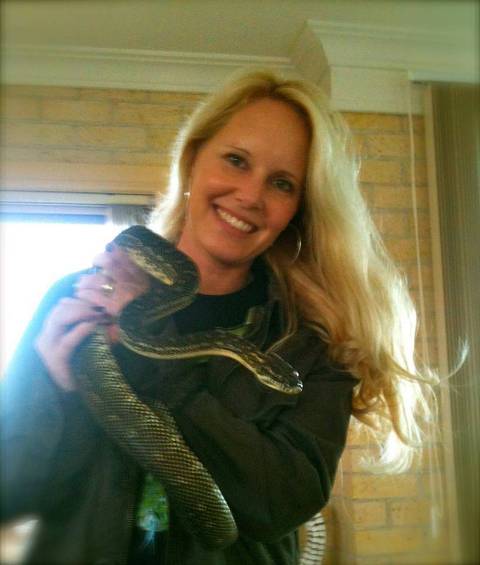 Kind, considerate, considered by many as the ‘poster girl’ for SCWC, not
just because of her dedication and input and showing a beauty on the inside that
ranks with her outer loveliness, but because Lynleigh does deliver; she will go
out in the community and give Wildlife Educational Talks and Demonstrations and
it is Lynleigh we’ve met when attending working bees, garden tools in hand or
greeting people at the door of fundraisers.
Kind, considerate, considered by many as the ‘poster girl’ for SCWC, not
just because of her dedication and input and showing a beauty on the inside that
ranks with her outer loveliness, but because Lynleigh does deliver; she will go
out in the community and give Wildlife Educational Talks and Demonstrations and
it is Lynleigh we’ve met when attending working bees, garden tools in hand or
greeting people at the door of fundraisers.
Last week this wonderful woman was in Hobart attending the Wildlife Rehabilitators Conference, this week more work out in the community doing her utmost to share information on the devastating impact we are all having on our native wildlife and how everyone can do something to shift us in the opposite direction. Add to that a home filled with critters she is carer for while they rehabilitate, two wonderful children and a supporting husband who join her in this work and you get a glimpse into a 24/7 life that’s bursting at the seams with…well, life!
When and where were you born and what was your life like while growing up?
I only have 5 pairs of shoes. Snake-catching boots, thongs, runners, winter boots and horribly uncomfortable high-heels for fancy functions. Unlike most women, shoes don’t interest me at all. They were pretty much optional when I grew up in Zimbabwe (which was still called Rhodesia when I was born back in 1972).
I had a fantastic childhood – mostly because I was blissfully oblivious to the fact that we were in the middle of a Civil War!
I thought it was normal to travel in convoy to avoid being attacked by terrorists and that everyone’s father was called up to serve in war… The country was crippled by sanctions imposed by the UN and we had petrol rations, food rations and went for months without luxuries such as chocolate. But I didn’t know any different and thought that sleeping overnight in the car in the “petrol queue” was a huge adventure…!
We lived on a relatively large property that comprised of a fairly ordinary 3-bedroom, 1-bathroom house but an adventure filled wonderland of a garden. We had the perfunctory rolling lawns directly off the verandah but from there, the garden got interesting… Right in the middle of our land was a huge monolithic rock – bigger and taller than our entire house and riddled with niches, caves, nooks and crannies. There was an orchard of fruit-trees at the bottom of the property, a chicken-run, a grape-vine along one fence and areas of rock outcrops with ‘wag-a-bietjie’ thorn-bushes (which literally means ‘wait-a-minute’ thorn bushes – which is what you have to do when you get caught up in them!) The servants’ quarters were in the far left-hand side of the property, just beyond the mango trees. We had a house-servant called Naison who was an ex-boxer (his face was cross-stitched with scars) and we had a garden helper called Madala (which means ‘very old’). In many countries, having servants is taboo. In Rhodesia it was perfectly ordinary.
My sister (Gail) and I spent countless hours clambering over the rock outcrops, monkeying up the trees, guzzling fruit from the orchard and running around like bare-footed hooligans. We often pretended to be undercover spies deeply embedded in espionage and ‘spied’ on our neighbours, taking down comprehensive notes about their every move. Our two chowchow dogs were often transformed into valiant steeds in a game of Cowboys and Indians and we sometimes built fairygardens, had picnics on the giant rock and incessantly pestered all the little bugs and critters that we encountered on the property. We were animal-mad from the very beginning. So were both our parents. Many little creatures haplessly wandered into our lair – tortoises, squirrels, blue-headed lizards and the odd cobra. We never harmed any of them – rather, we pestered them with cuddles and love (except the snakes which we just observed from a reasonable distance).
We were both entranced by snakes, though, and they became our favourite animal.
People often ask me why I love snakes so much. I think my sister and I both became obsessed with them after a rather unfortunate incident in our early childhood. Our parents had taken us to a plant nursery on the outskirts of town. We adored the nursery with its myriad plants, flowers, ferns, shrubs. We played hide ‘n’ seek together amongst the ferns and hid our plastic toy soldiers among the trees for each other to ‘find’. On this particular day – whilst playing - we spotted a magnificent rinkhals (a type of venomous snake in Southern Africa) slithering through the leaf-litter. He was beautiful.
He was just going about his business, not harming a soul. We watched him – enthralled. Then suddenly a shovel-wielding worker slammed him in the head repeatedly, with such force that all his innards flew into the air and into our hair. We screamed and screamed! People thought we were screaming because we were afraid of the snake, but we were screaming because of the sheer injustice of what had happened to that poor, innocent creature…
From that day onwards, an unspoken pact to educate people about snakes seemed to take hold of us both.
Gail is now a snake-handler and Eco-tourism officer at Blydepoort in Southern Africa. I rescue and relocate snakes (and other wildlife) here in Australia.
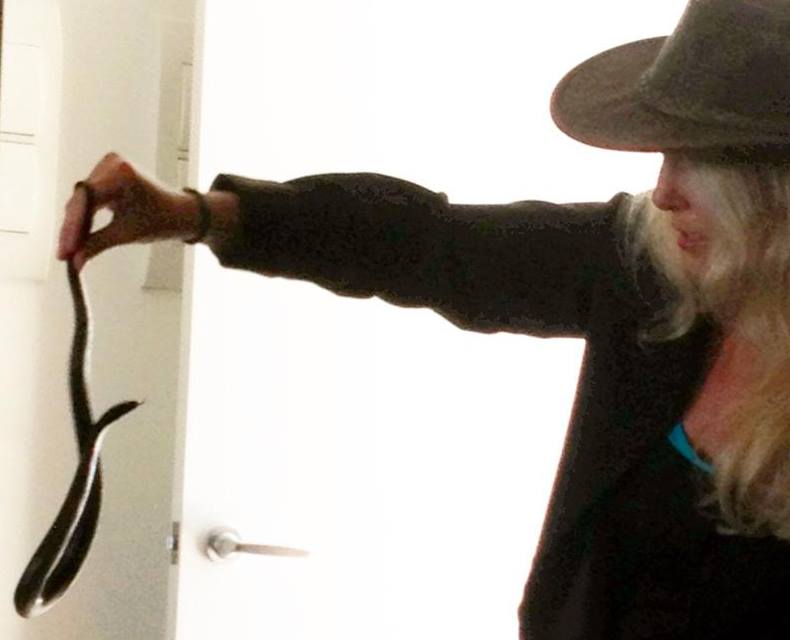
Lynleigh with a snake
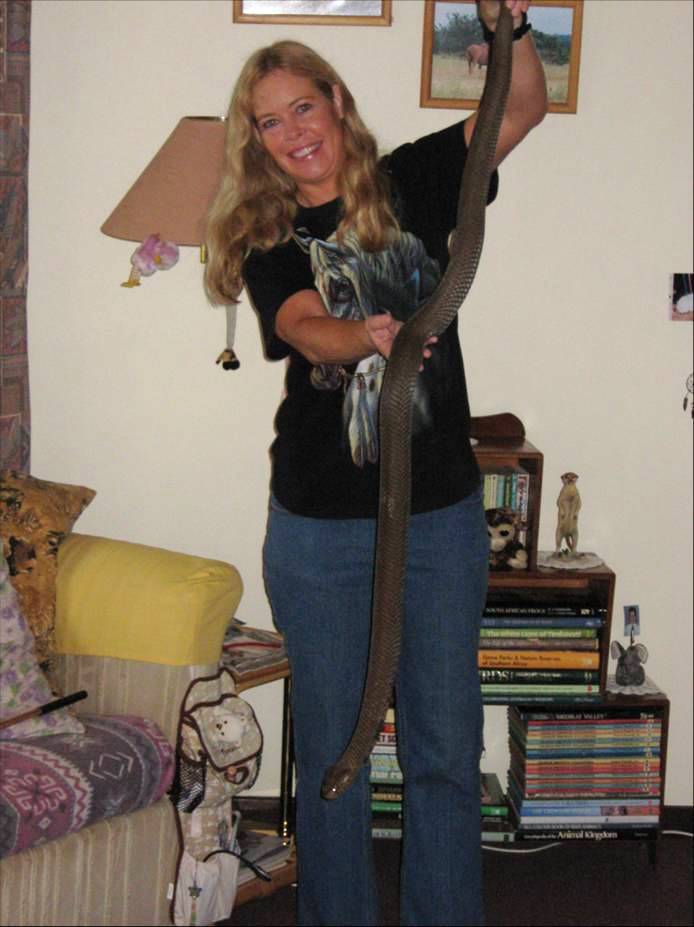
Gail with one of her snakes
When did you move to Australia ?
My husband and I moved to Australia 17 years ago, shortly after getting married. We’d been childhood sweethearts from the age of sixteen. Both our children – Connor (13) and Kayleigh (11) were born in Sydney and have always held Australian passports. Connor is an Aussie through-and-through and supports the Wallabies in the rugby. Kayleigh, however, believes she’s African. She even speaks Zulu! She’s so much like my sister and has inherited the snake-loving gene, too. For her seventh birthday she asked for a pet snake and Scayleigh the Spotted Python has been a much-loved member of the family ever since.
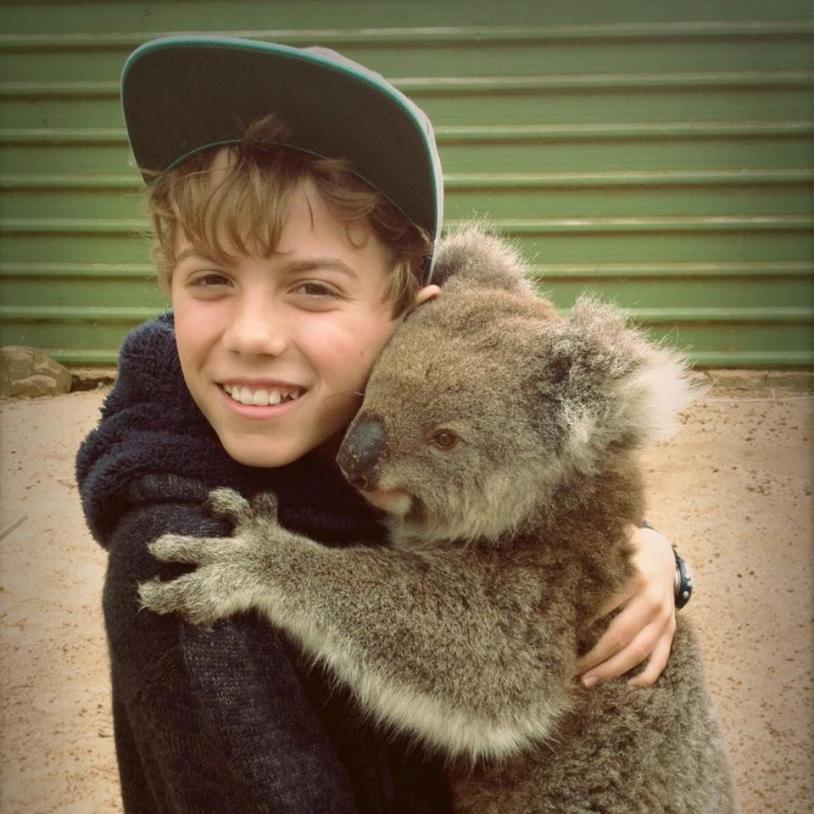
Connor
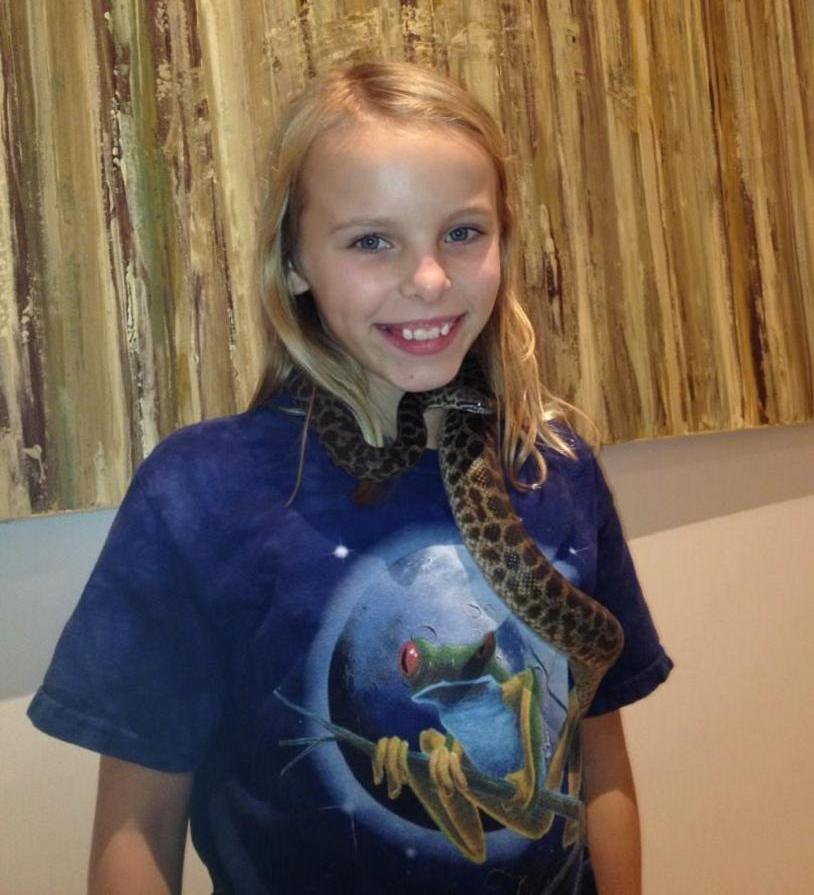
Kayleigh
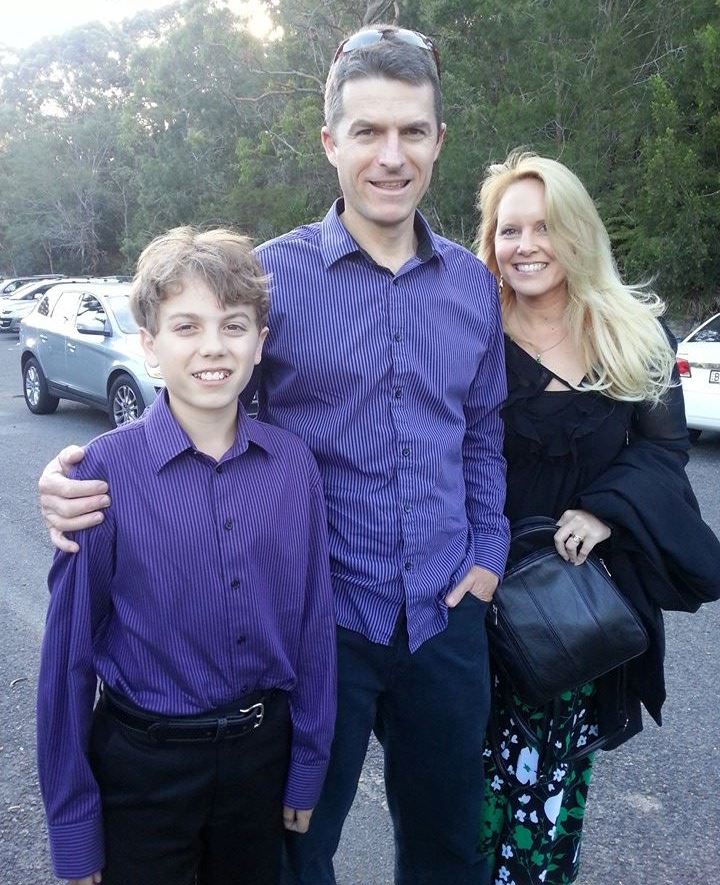
Kayleigh taking the picture
You are known as ‘the poster girl’ for Southern Cross Wildlife Care and not only curate our Critter of the month page but also do a fair amount of hands on caring 24/7 – please describe the range of animals people call you to attend – why you are called(range of injuries) and what being a carer for each of these varying critters entails...
Knowing that I love animals, many of my friends would ring me if they found a snake in their backyard or an injured possum on the road. After undertaking many ‘unofficial’ wildlife rescues, I decided it would be wise to do a course and become a volunteer wildlife rescuer. In November 2011 I became a very proud member of Sydney Metropolitan Wildlife Services (Sydney Wildlife) after completing their Basic Rescue and Care Course. I couldn’t wait to sign up for the Venomous Snake Handling Course which took place 2 months later. By December of that year, I was licensed to handle any Australian snake and I couldn’t wait to do my first rescue!
Since that day I have done more rescues than I could possibly count. It surprises me how often our poor wildlife find themselves in strife – mostly caused by humans in some way.
Habitat loss, collisions with vehicles, attacks by domestic pets, entanglement in fishing line etc. One night I was called to a kookaburra rescue. The poor bird had hit a vehicle and was still caught in the grill of the car… She needed a miracle…!
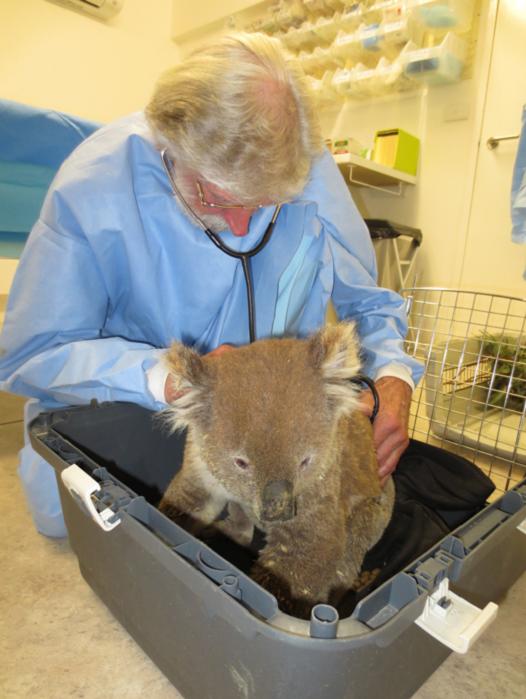 And that miracle came in the form of Dr Howard
Ralph. I knew veterinarians were special, but he was just
super-human.
And that miracle came in the form of Dr Howard
Ralph. I knew veterinarians were special, but he was just
super-human.
Dr Ralph is a retired veterinary surgeon who – along with his devoted wife and a small group of volunteers – spends his every waking hour saving wildlife – on a 100% voluntary basis! He started Southern Cross Wildlife Care 5 years ago in order to provide veterinary services to rescued wildlife. I started volunteering for Southern Cross Wildlife Care the moment I walked in with the kookaburra – I had never seen such dedication to the welfare of wildlife! I knew I wanted to be a part of it!
The beauty of being a volunteer for both organisations is that Sydney Wildlife is a rescue group and Southern Cross Wildlife Care provides veterinary care to rescued wildlife. The two organisations go hand-in-hand. Perfect for me!
Wildlife rescuing is NOT for the faint-hearted…! At most rescues you are dealing with many aspects: an unfamiliar location, a panicked member of the public, a scared and injured animal, maybe dangerous weather conditions… One of my wildest rescues ever started with a call-out to the North Head Water Treatment Facility. The underground workers had encountered a large black snake tangled in some cables and were reluctant to continue work until it had been removed. On arrival, I was issued with a special permit to enter the underground facility. I was provided with high-visibility clothing and a hard-hat and was lead through two sets of heavy metal doors and into an elevator. Only two floors were marked on the elevator: “Bat Cave” and “Hell” - both more than 60m underground…! Faced with the choice between “Bat Cave” and “Hell”, which would you choose?
We alighted from the elevator and it was easy to see why it was called The Bat Cave… Low arched ceilings of blasted rock were inches from my head. Hot air swirled around and the sounds of dripping water and whooshing air surrounded me. I’ll admit – I was creeped out… The snake was the least of my concerns! I followed the duty-manager down through the warren of tunnels and eventually came to another heavy metal door with a huge step-up into a control room of some kind. The workers were standing back and pointing to the snake under a workstation. It was very dark and it took my eyes some time to adjust enough to see the black snake… He’d managed to get entangled in computer cabling. It was tricky as he was positioned just above an open grate. If I were to disentangle him and drop him, he’d fall through the open grate. All the aspects of a difficult rescue were present: an unusual underground location, panicked workers, a scared animal, dangerous conditions involving wiring. It was a tricky rescue and my hand was often inches from the snake’s mouth. There were a few heart-stopping moments… But I finally managed to get him free and bag him – after which everyone in the room applauded! We nicknamed the snake “Hades” due to his close proximity to “Hell” ha ha ha.
Some of our rescues involve removing baby joeys from the bloodied bodies of their dead mothers, killed by cats or dogs or cars. If the babies are relatively unscathed, we begin the arduous undertaking of becoming their adoptive Mums. It’s wonderful but exhausting… The babies often require 3-hourly feeds – night and day. And they don’t scream for food at night like a human baby; you have to set an alarm to feed them or they’ll just die quietly waiting for you to feed them.
Ringtail possums can take 3 months to reach a stage where they are old enough to be released. Swamp wallabies and kangaroos can take more than 18 months to get to that same stage!
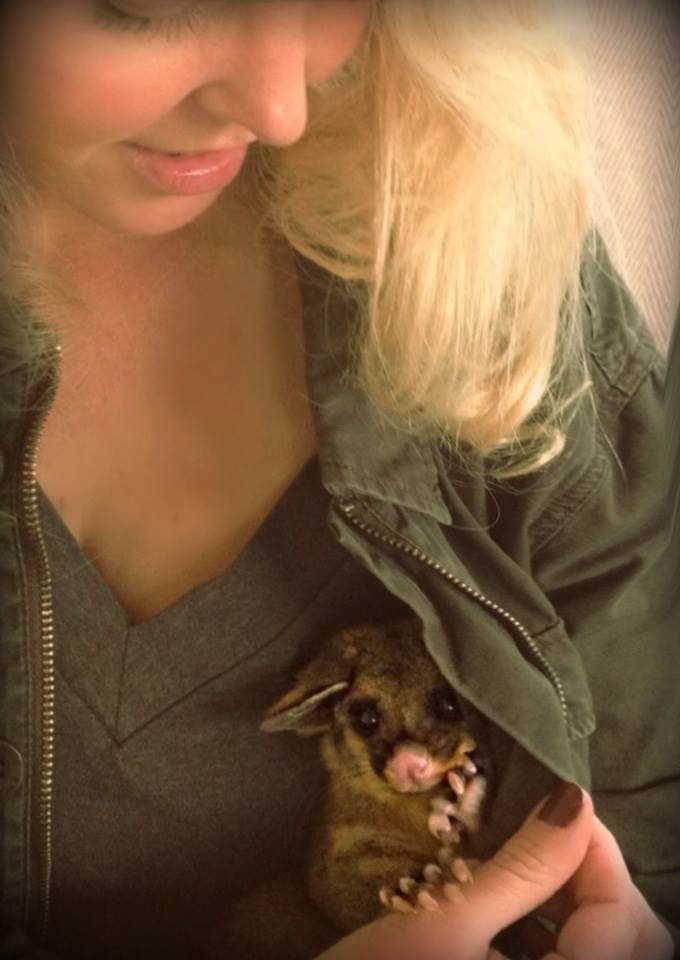
Possum Mum!
You’re also a mum – how do you balance all the work you do as a volunteer for SCWC with running a home and catering to two growing children?
Being a possum-mum can be fun but when you have two human joeys to tend to as well, things can get rather out-of-hand.
Luckily my two kids are every bit as concerned with the welfare of the injured critters as I am. They help a lot – with caring for the animals and often at the rescues as well.
My poor husband also has to cope with things he never imagined having to deal with… Seeing gross food items in the fridge, such as mealworms, crickets and frozen mice (lizard and snake-food). He puts up with having turtles in the bath, baby possums in the bed, snake-surgery on the dining-room table and a car full of rescue equipment and possum-foliage.
Weekends are often spent scouting around for good release sites, building aviaries, cleaning poop out of enclosures or cradling injured or dying creatures. Some days I think it drives him batty but deep down I think he loves that we are making a difference and teaching our kids to be less focused on themselves and more on the world around them.
If you could be a another creature for a day – furred, finned feathered or scale – what would you be and then do?
Recently I’ve done a few raptor rescues. Watching these magnificent creatures in flight makes me think that if I were to be an animal of any kind, I would choose to be a bird of prey: minimal predators, the ability to fly and razor-sharp talons. Great combination.
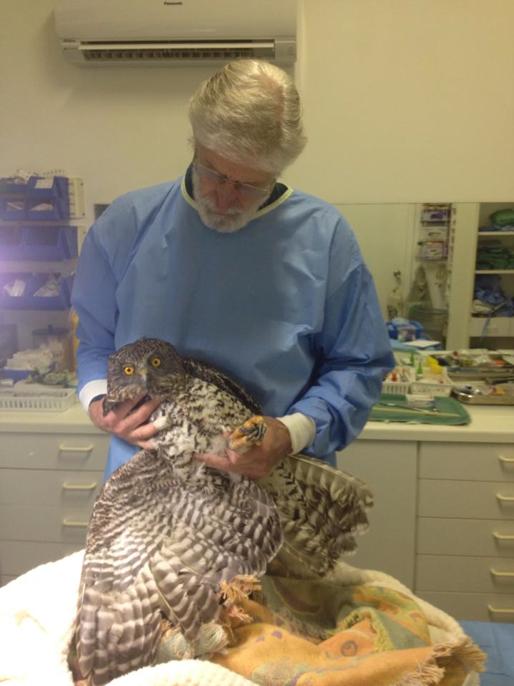
Dr Howard Ralph with a Powerful Owl Lynleigh recently looked after until release back into it's home habitat. See Powerful and Precious by Lynleigh Grieg
What is your favourite place in Pittwater and why?
My favourite place in all of Pittwater is Narrabeen Lagoon. It is the most amazing little microcosm of habitats for every creature imaginable. I love the serenity of kayaking on the lake beside pelicans, black swans and the local resident ducks.
I love watching my kids sailing and my husband wind-surfing – both sports that involve harnessing the energy of the wind. I love to cycle with my family around the lake and stop for coffee at the Boathouse. It’s a wonderful place – full of adventure, wildlife and wistful moments.
What is your ‘motto for life’ or a favourite phrase that you try to live by?
We have a family motto: Vision, Vigour, Love and Laughter.
Each of us brings one of these attributes to the family unit and together we strive for all 4.
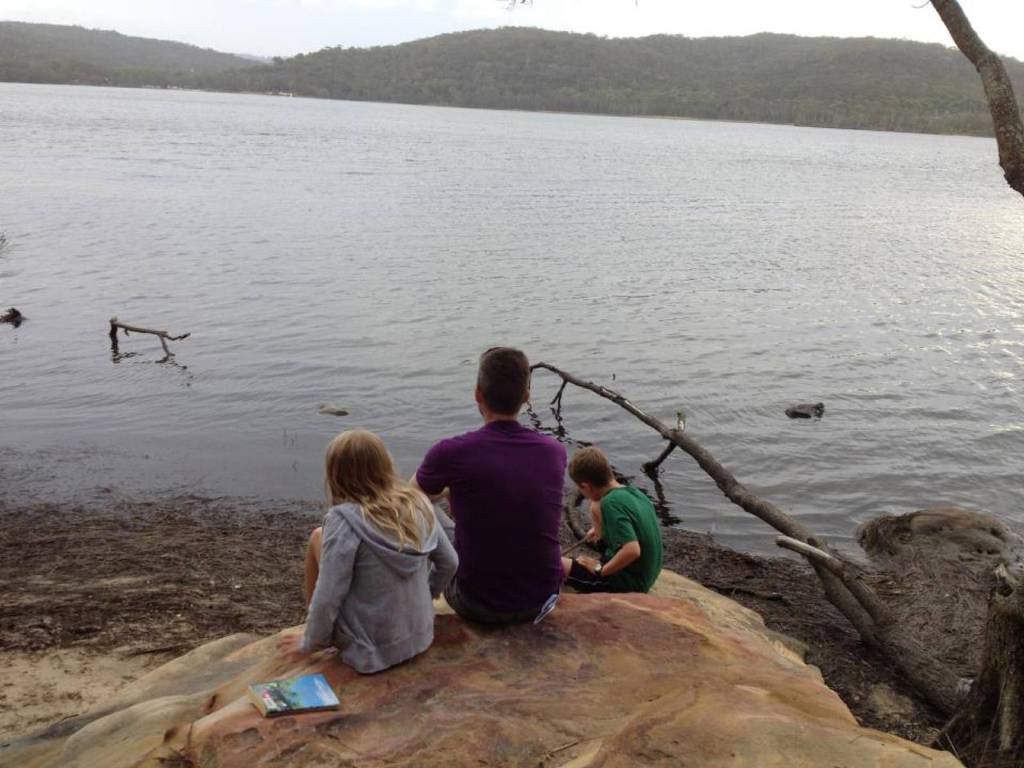
Lynleigh's family at Narrabeen LAgoon.
Copyright Lynleigh Grieg, 2014.